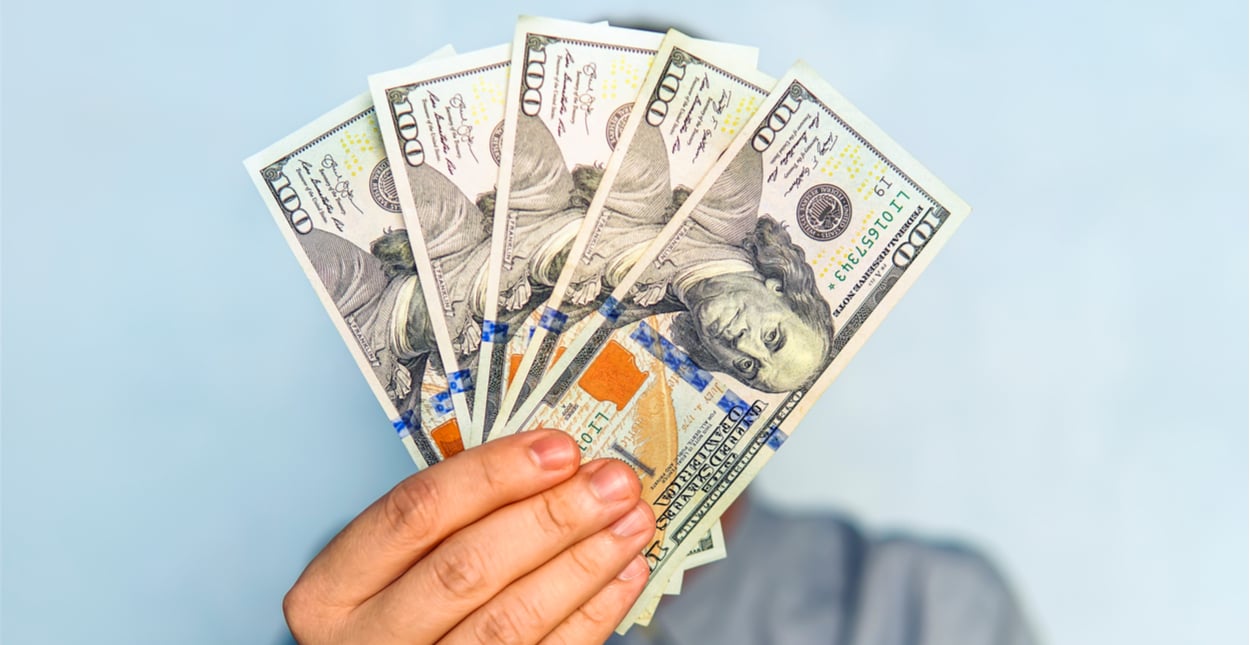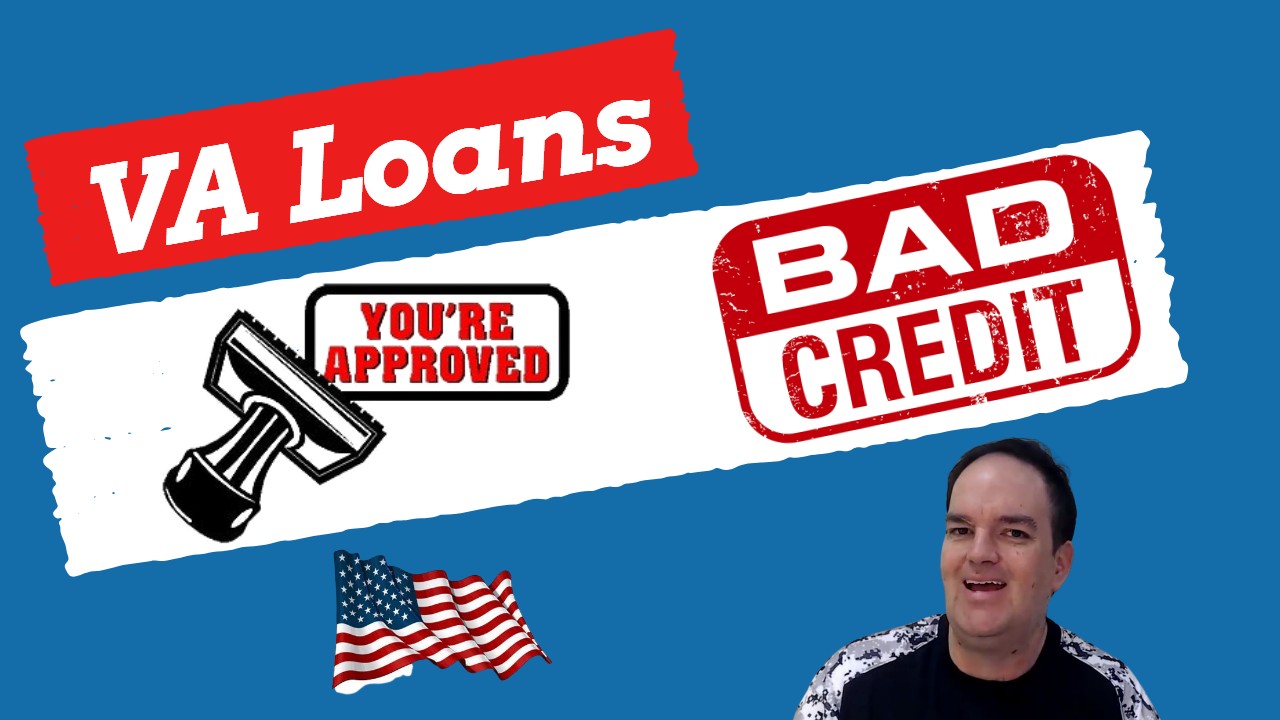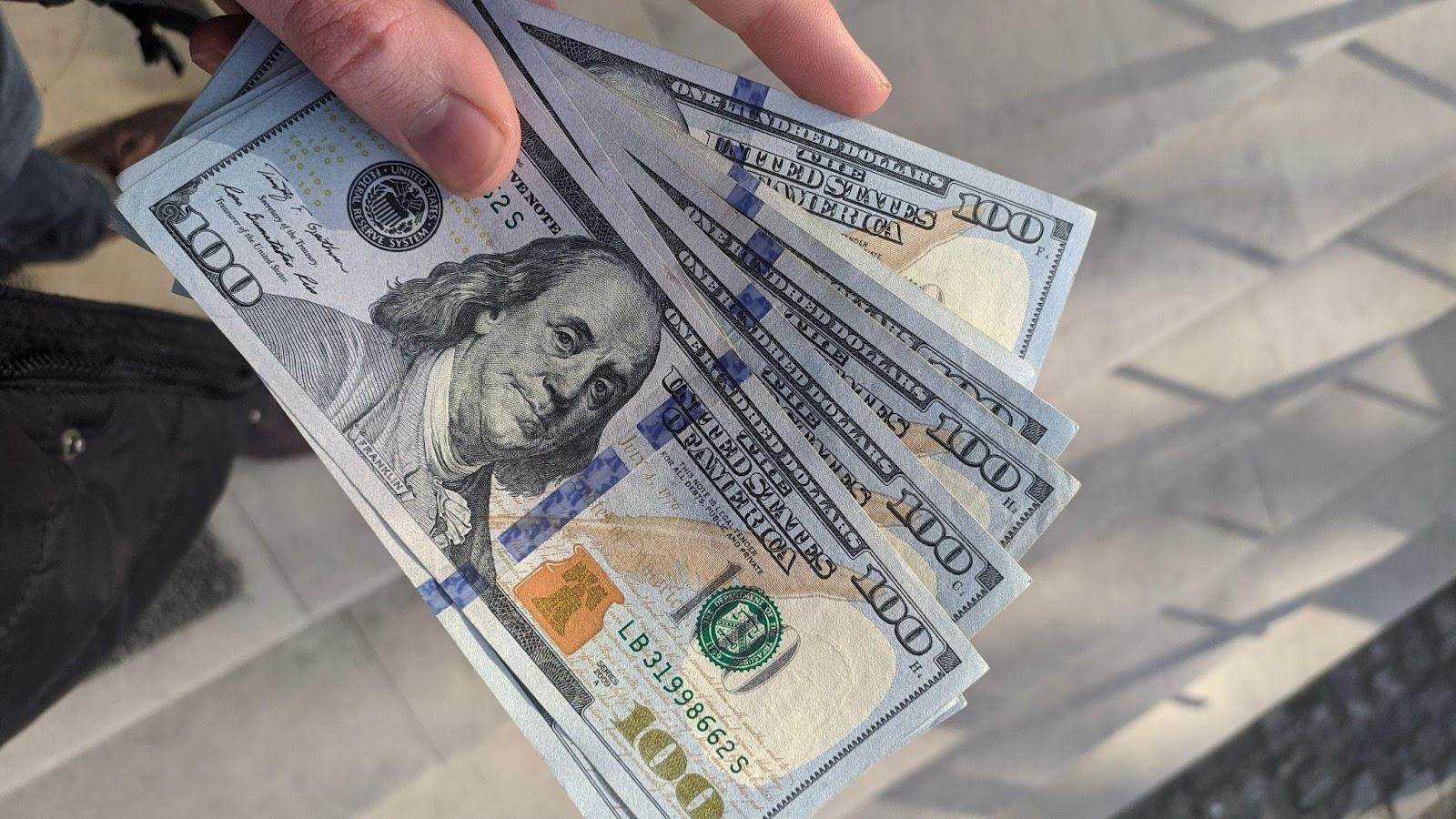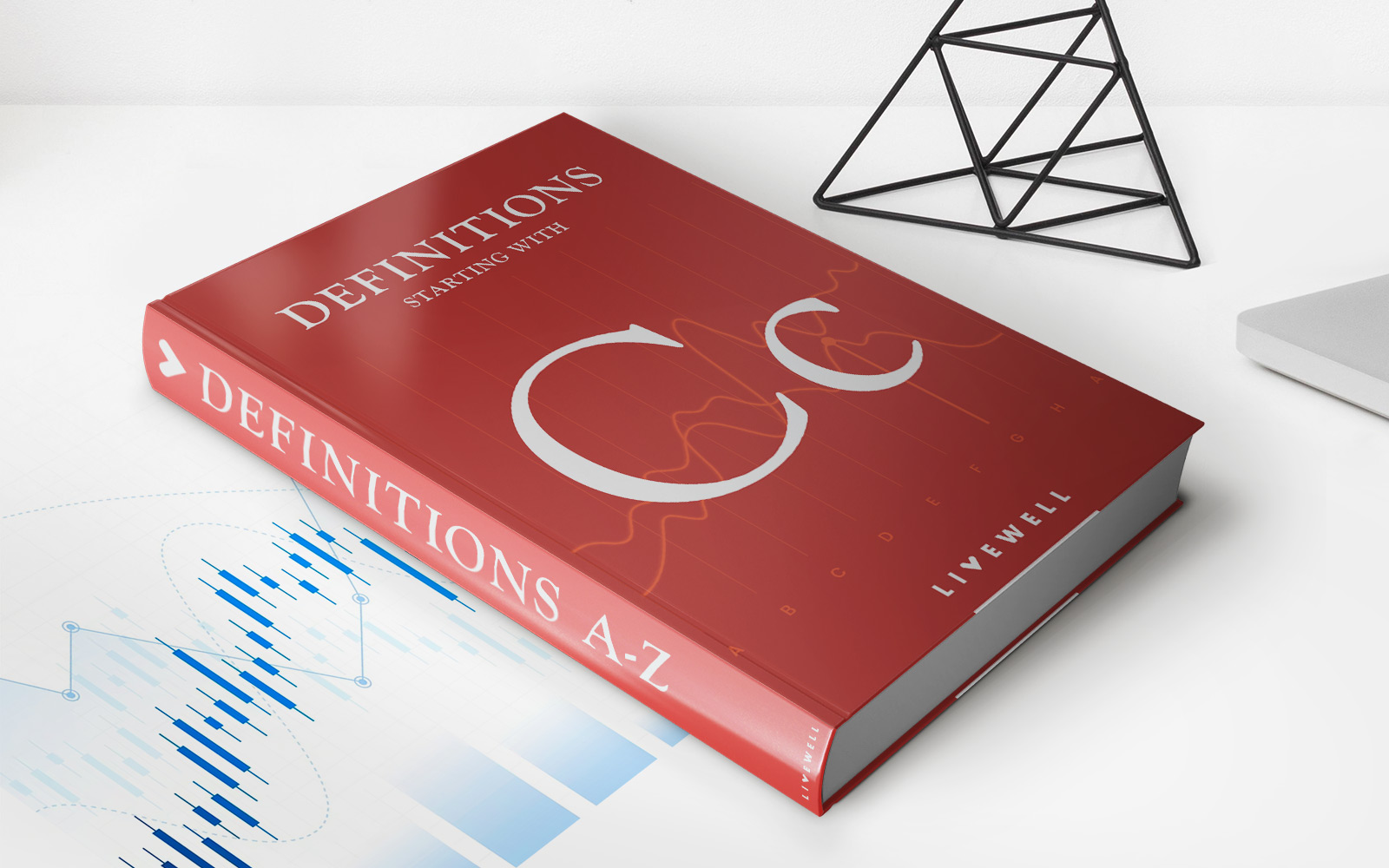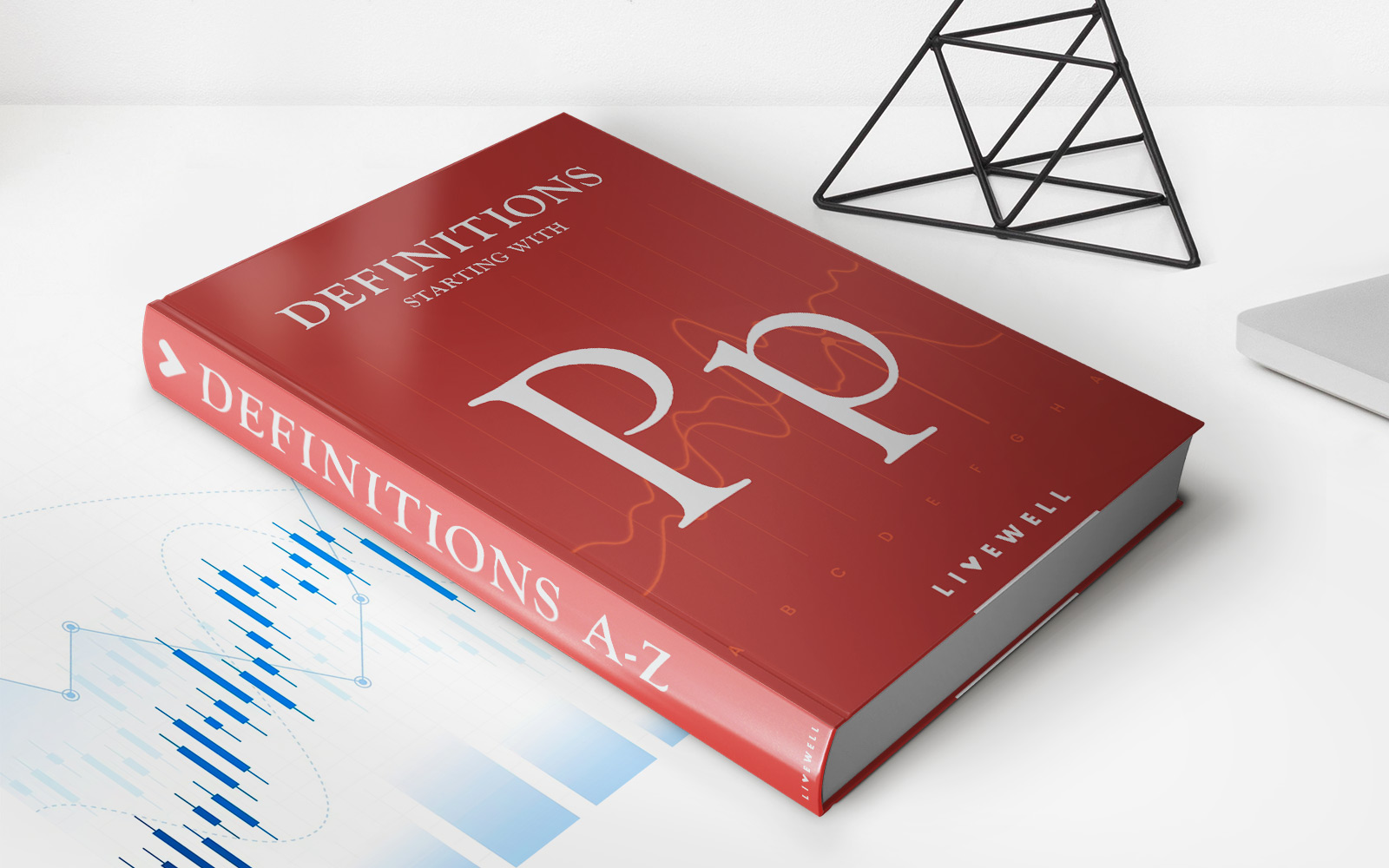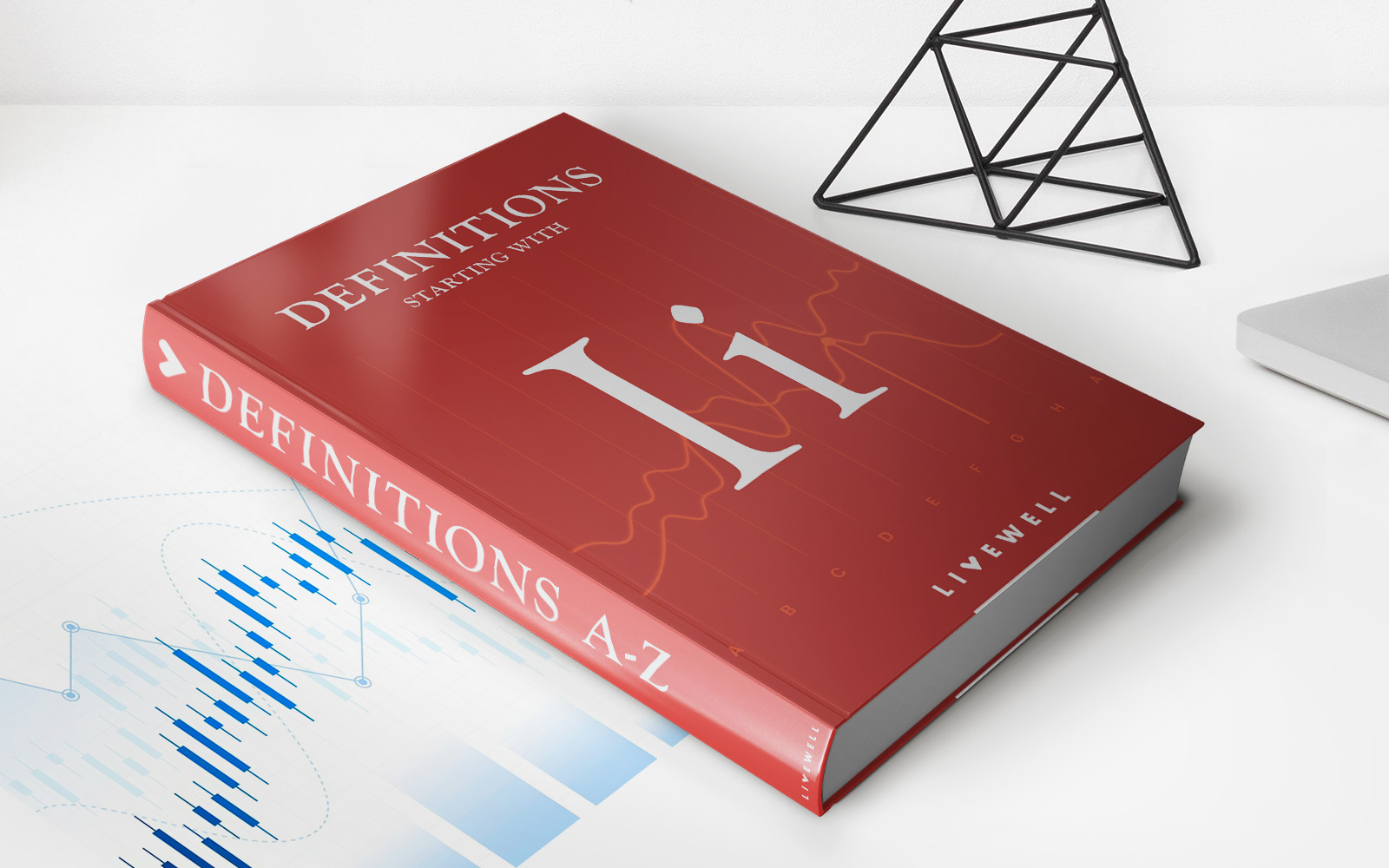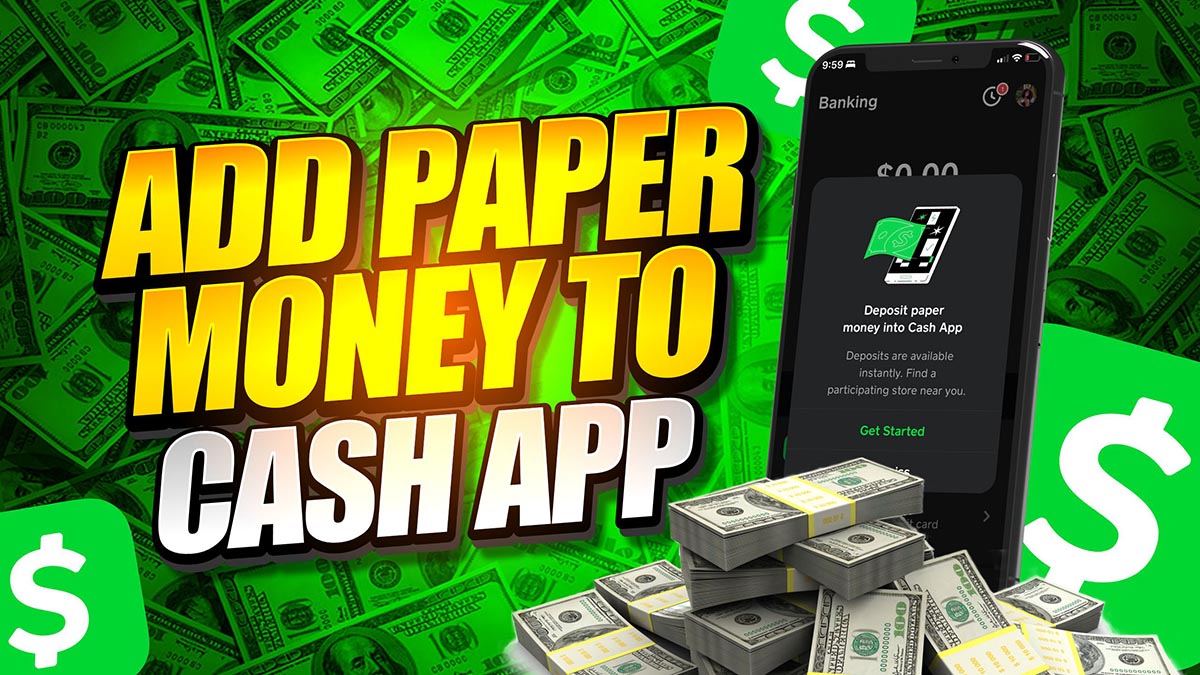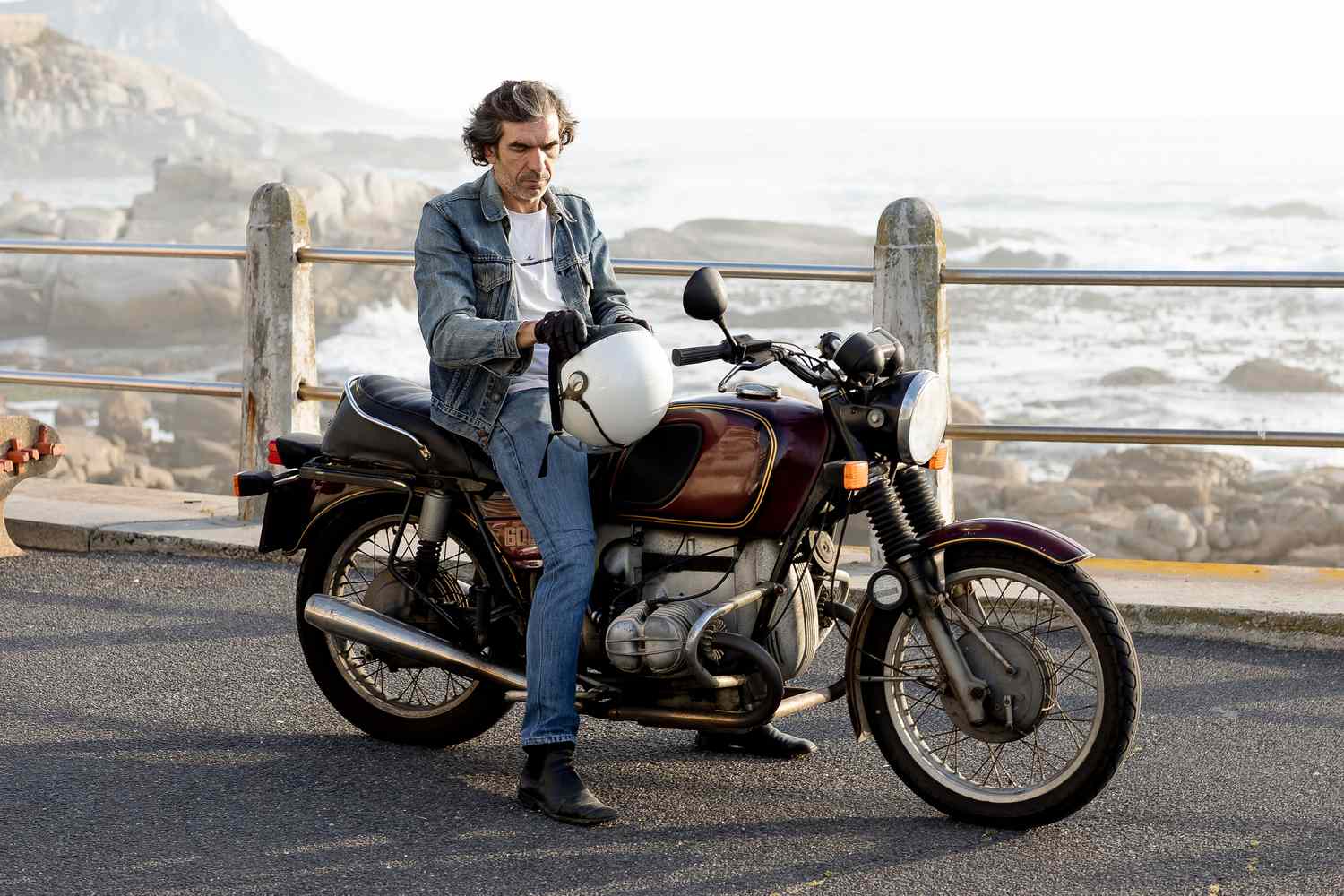

Finance
How To Get A Motorcycle Loan With Bad Credit
Published: January 7, 2024
Looking for finance options to get a motorcycle loan with bad credit? Discover practical tips and strategies to secure your dream bike despite your credit history.
(Many of the links in this article redirect to a specific reviewed product. Your purchase of these products through affiliate links helps to generate commission for LiveWell, at no extra cost. Learn more)
Table of Contents
Introduction
When it comes to purchasing a motorcycle, having bad credit can feel like a roadblock. Traditional lenders may be reluctant to approve a loan, and you may be worried about facing high interest rates and limited options. However, it’s important to know that getting a motorcycle loan with bad credit is not impossible.
While bad credit can pose challenges, there are steps you can take to increase your chances of securing a loan and getting the motorcycle of your dreams. Understanding the dynamics of bad credit and how it affects your loan application is the first step towards a successful outcome.
Researching lenders and exploring loan options tailored for individuals with less-than-perfect credit can lead you to suitable loan options. Additionally, there are measures you can take to improve your credit score, which will not only increase your chances of loan approval but also help you secure better interest rates.
Another important aspect is gathering the necessary documentation to streamline the application process. Providing complete and accurate information to lenders is crucial in boosting your credibility as a borrower. With these documents in hand, you’ll be ready to confidently apply for a motorcycle loan.
Applying for a motorcycle loan with bad credit may require some negotiation skills to secure the most favorable terms and interest rates. By being prepared and knowledgeable about your financial situation, you’ll be better equipped to navigate the negotiation process.
Once you have secured a loan and finalized the terms, it’s time to make your dream of owning a motorcycle a reality. With the funds in hand, you can proceed to purchase the motorcycle of your choice and start enjoying the freedom of the open road.
In this article, we will explore each of these steps in detail, providing you with valuable insights and practical tips to help you get a motorcycle loan with bad credit. By following these steps and being proactive in improving your creditworthiness, you’ll be on your way to receiving loan approval and embarking on your two-wheeled adventure.
Understanding Bad Credit and Motorcycle Loans
Before diving into the process of obtaining a motorcycle loan with bad credit, it’s important to understand what bad credit means and how it can affect your loan application.
Bad credit refers to a low credit score, usually below 600, that indicates a higher risk for lenders. This can be the result of past payment delinquencies, bankruptcy, high credit utilization, or a lack of credit history. Lenders view individuals with bad credit as less likely to repay their loans on time, which can make them hesitant to approve a loan or offer less favorable terms.
However, despite having bad credit, it is still possible to secure a motorcycle loan. Many lenders, including those specializing in subprime lending, offer loan options specifically designed for individuals with lower credit scores. These lenders assess loans based on factors other than just credit score, such as income, employment history, and debt-to-income ratio.
When applying for a motorcycle loan with bad credit, it’s important to be mindful of the potential drawbacks. You may face higher interest rates compared to borrowers with excellent credit. Additionally, you may have a limited selection of lenders and loan options to choose from. Nonetheless, by understanding the impact of bad credit and being prepared, you can navigate the loan process more confidently.
It’s worth noting that improving your credit score before applying for a motorcycle loan is a smart move. By taking steps to enhance your creditworthiness, such as paying off existing debts and making timely payments, you can increase your chances of getting approved for a loan and potentially secure more favorable interest rates.
Overall, while bad credit can make obtaining a motorcycle loan more challenging, it is not an insurmountable obstacle. By understanding the nuances of bad credit and the loan process, you can position yourself for success. In the following sections, we will delve into the steps you can take to research lenders, improve your credit score, gather documentation, apply for a loan, negotiate terms, and ultimately secure the funds needed to purchase your dream motorcycle.
Researching Lenders and Loan Options
When it comes to getting a motorcycle loan with bad credit, it’s crucial to dedicate time to research and explore different lenders and loan options available. This step can significantly impact the quality of the loan you secure.
Start by searching for lenders specializing in bad credit motorcycle loans. These lenders are experienced in working with individuals who have lower credit scores and can offer more flexible terms. Online platforms and search engines can be valuable resources for finding such lenders.
As you narrow down your list of potential lenders, take the time to read reviews and gather information about their reputability and customer satisfaction. Look for lenders with positive feedback and a history of providing fair and transparent loan terms.
Compare the interest rates, loan terms, and any additional fees associated with each lender. Keep in mind that lenders may consider other factors, such as income and employment history, alongside your credit score. Understanding these criteria will help you identify lenders who are more likely to approve your loan application.
Consider reaching out to multiple lenders to inquire about their loan options and requirements. By doing so, you can get a better sense of the loan amounts they offer, the repayment terms available, and the required documentation. Gathering this information will allow you to make an informed decision and choose a lender that best suits your needs.
It’s also worth exploring alternative financing options, such as credit unions or online peer-to-peer lending platforms. These options may have more lenient criteria for loan approval and could offer competitive rates.
Remember to avoid predatory lenders who take advantage of individuals with bad credit. Be cautious of lenders who guarantee approval or charge excessive interest rates and fees. Read loan agreements carefully and ask questions to ensure you fully understand the terms and any associated costs.
By dedicating time to researching lenders and loan options, you increase your chances of finding a reputable lender who can provide you with a motorcycle loan that fits your financial situation. Don’t rush this step, as finding the right lender is essential for a successful loan application process.
Improving Your Credit Score
If you have bad credit, taking steps to improve your credit score before applying for a motorcycle loan can greatly increase your chances of approval and potentially help you secure more favorable loan terms. Here are some strategies to improve your credit score:
1. Check your credit report: Start by obtaining a copy of your credit report from one of the major credit bureaus. Review it carefully to identify any errors or discrepancies that may be negatively impacting your score. If you find any inaccuracies, dispute them with the credit bureaus to have them corrected.
2. Make timely payments: One of the most significant factors affecting your credit score is your payment history. Make sure to pay all your bills on time, including credit card payments, loans, and utilities. Setting up automatic payments or reminders can help ensure you don’t miss any payments.
3. Reduce your debt: Aim to lower your overall debt, especially high-interest credit card debt. Pay off outstanding balances when possible and consider consolidating multiple debts into one loan. This can help improve your debt-to-income ratio, which is an important factor lenders consider when assessing your creditworthiness.
4. Keep credit utilization low: Credit utilization refers to the percentage of your available credit that you are currently using. Aim to keep your credit utilization ratio below 30%. For example, if you have a credit limit of $10,000, try to keep your outstanding balance below $3,000. This demonstrates responsible credit management and can positively impact your credit score.
5. Build a positive credit history: If you have limited credit history, it can be beneficial to establish new credit accounts and demonstrate responsible credit usage. Consider opening a secured credit card or becoming an authorized user on someone else’s credit card. Make small purchases and pay them off in full each month to build a positive credit history.
6. Avoid opening new credit accounts: While it’s important to establish a credit history, refrain from opening multiple new credit accounts if you are actively looking for a motorcycle loan. Each new credit inquiry can temporarily lower your credit score, and lenders may view excessive recent credit inquiries as a risk factor.
7. Be patient: Improving your credit score takes time and patience. It’s essential to demonstrate consistent positive credit behaviors over time to see significant improvements in your score. Stay committed to responsible financial habits, and you will gradually see your credit score rise.
By taking proactive steps to improve your credit score, you demonstrate to lenders that you are a responsible borrower. This, in turn, increases your chances of getting approved for a motorcycle loan and securing more favorable loan terms, such as lower interest rates and larger loan amounts. Don’t underestimate the power of a improved credit score in your quest for a motorcycle loan with bad credit.
Gathering Necessary Documentation
When applying for a motorcycle loan, regardless of your credit score, you will need to provide certain documents to lenders to verify your identity, income, and financial stability. Having these documents ready beforehand can save time and streamline the application process. Here are the essential documents you should gather:
Proof of Identity: Lenders will require proof of your identity, such as a valid driver’s license or passport. Make sure your identification documents are up-to-date and easily accessible.
Proof of Income: Lenders need to assess your ability to repay the loan, so they will ask for proof of income. This can include recent pay stubs, bank statements showing regular income deposits, or tax returns if you are self-employed. Make sure these documents clearly demonstrate your income stability.
Employment Verification: Some lenders may require employment verification, especially if you are a salaried employee. They may ask for an employment verification letter from your employer or contact your employer directly to confirm your employment status.
Proof of Residence: Lenders may request proof of your current address. This can be in the form of a utility bill, lease agreement, or any official document that clearly displays your name and current address.
Bank Statements: Providing recent bank statements can help lenders assess your financial stability and track your cash flow. Make sure to gather statements from your main checking or savings accounts for the past few months.
Vehicle Information: Since you are applying for a motorcycle loan, lenders may require information about the motorcycle you intend to purchase. This can include the make, model, VIN number, and the sales agreement or purchase order from the dealership.
Proof of Insurance: Some lenders may require proof of insurance for the motorcycle you are purchasing. Contact an insurance provider to secure a policy and obtain the necessary documentation.
Other Financial Information: Depending on your financial situation, additional documentation may be required. This can include proof of other loans or debts, child support payments, or alimony payments. Be prepared to provide any relevant financial information that lenders request.
Having these documents prepared ahead of time will not only expedite the loan application process but also demonstrate your preparedness and organizational skills to lenders. Double-check that all documents are accurate, up-to-date, and neatly organized before submitting them with your loan application.
Remember, different lenders may have specific requirements, so it’s always a good idea to inquire about their documentation requirements in advance. By being proactive and providing complete and accurate information, you increase your chances of receiving loan approval and obtaining the motorcycle loan you desire.
Applying for a Motorcycle Loan
Once you have researched lenders, improved your credit score, and gathered the necessary documentation, it’s time to proceed with the loan application process. Applying for a motorcycle loan involves several steps, and attention to detail is key. Here’s a guide to help you navigate the application process:
1. Research the application process: Each lender may have a slightly different application process. Take the time to familiarize yourself with their requirements and procedures. Some lenders may offer online applications, while others may prefer in-person or phone applications.
2. Complete the application form: Fill out the loan application form provided by the lender. Be thorough and accurate in providing all requested information, including personal details, employment information, and financial information. Double-check for any errors or omissions before submitting the form.
3. Attach supporting documents: Alongside the application form, submit the necessary supporting documents as outlined by the lender. This typically includes proof of identity, proof of income, employment verification, bank statements, vehicle information, and other relevant documentation. Ensure that all documents are legible and organized.
4. Review and understand the terms: Carefully review the loan terms and conditions provided by the lender. Pay close attention to the loan amount, interest rate, repayment terms, fees, and any additional clauses. Seek clarification from the lender for any terms that you do not understand or seek the assistance of a financial advisor if needed.
5. Consider a co-signer: If your credit score is particularly low or you are struggling to secure favorable loan terms, you may consider asking a trusted individual with good credit to co-sign the loan with you. This can improve your chances of loan approval and help you negotiate better terms.
6. Submit the application: Once you have carefully reviewed the application and supporting documents, submit the complete package to the lender. Ensure that you keep copies of all documents for your records.
7. Follow up with the lender: After submitting your application, stay proactive by following up with the lender to ensure that they have received all necessary documents and that the application process is progressing smoothly. Be responsive to any requests for additional information or clarification.
It’s important to note that the timeframe for loan approval may vary depending on the lender and other factors. Some lenders can provide instant decisions, while others may take a few days or more to review the application. Be patient and avoid applying for multiple loans simultaneously, as this can negatively impact your credit score.
By being thorough and organized during the loan application process, you increase your chances of a successful outcome. Pay attention to details, ask questions when needed, and remain engaged with the lender throughout the application process. With persistence and careful application, you’ll be one step closer to securing a motorcycle loan.
Negotiating Loan Terms and Interest Rates
Once you receive loan offers from lenders, it’s time to shift your focus to negotiating the terms and interest rates. While lenders may have their initial offers, there is often room for negotiation. Here are some tips to help you negotiate the best loan terms and interest rates:
1. Know your creditworthiness: Understand your credit score and financial situation before entering into negotiations. Lenders will consider factors such as your credit history, income, and employment stability. Presenting a strong case highlighting your improved credit score and financial stability can strengthen your negotiating position.
2. Research market rates: Familiarize yourself with current market rates for motorcycle loans. This will give you a baseline for comparison and help you determine whether the lender’s offer is competitive. Armed with this knowledge, you can enter negotiations with confidence and negotiate for more favorable rates.
3. Gather multiple loan offers: Consider obtaining loan offers from multiple lenders. This gives you leverage when negotiating as you can compare offers and use them as bargaining tools. Remember, lenders want your business, so they may be willing to adjust their terms and rates to secure your loan.
4. Review and understand all terms: Carefully review each lender’s loan terms, including repayment period, fees, and any other associated costs. Identify any terms that may be unfavorable or unclear, and seek clarification from the lender. This will help you negotiate specific aspects to improve the loan’s overall value.
5. Highlight your financial strengths: Emphasize your positive attributes as a borrower during negotiations. If you have a steady income, a good debt-to-income ratio, or a substantial down payment, make sure the lender is aware of these factors. Demonstrating your financial stability and ability to repay the loan can strengthen your negotiating position.
6. Prepare to compromise: Negotiation is a give-and-take process. Be prepared to compromise on certain terms while focusing on the most crucial aspects, such as interest rates and repayment period. Consider what is most important to you, and be open to finding common ground with the lender.
7. Consult with a loan officer or financial advisor: Seeking advice from a loan officer or financial advisor can provide valuable insights and guidance during negotiations. They can help you understand the intricacies of the loan terms, assess the value of the offer, and provide strategies to negotiate effectively.
Remember, the goal of the negotiation process is to secure better loan terms and interest rates. Be diligent, assertive, and respectful during negotiations. Consider the long-term implications of the loan, including the total cost of ownership, and ensure that the final agreed-upon terms align with your financial goals.
By being proactive and engaging in negotiations, you can potentially save money and improve the overall value of the motorcycle loan. Don’t be afraid to advocate for yourself and seek the best terms possible. With patience and persistence, you can achieve loan terms that align with your needs and financial situation.
Securing the Loan and Purchasing a Motorcycle
Securing the loan and purchasing the motorcycle is the final step in the process of obtaining a motorcycle loan. Once you have successfully negotiated the loan terms and interest rates, follow these steps to finalize the loan and make your dream of owning a motorcycle a reality:
1. Complete the necessary paperwork: The lender will provide you with the required loan documents to complete. Read through them carefully and ensure that you understand all the terms and conditions. Sign the documents as instructed and keep copies for your records.
2. Provide any additional documentation if needed: During this stage, the lender may request additional documentation, such as proof of insurance for the motorcycle. Be prompt in providing these documents to avoid any delays in the loan disbursement process.
3. Arrange for the loan disbursement: Work with the lender to arrange for the loan disbursement. Depending on the lender’s policies, the funds may be transferred directly to the dealership or provided to you as a check. Ensure that the funds are disbursed in a timely manner to facilitate the motorcycle purchase.
4. Start shopping for your motorcycle: With the loan funds secured, it’s time to start shopping for your motorcycle. Consider your budget, needs, and preferences when searching for the perfect bike. Visit dealerships, browse online listings, and take the time to test ride different models to find the motorcycle that suits you best.
5. Inspect the motorcycle: Before finalizing the purchase, thoroughly inspect the motorcycle for any visible damages or issues. If buying from a dealer, ask for a full inspection report and vehicle history. If purchasing from an individual, consider getting a professional mechanic to inspect the bike to ensure it is in good condition.
6. Negotiate the purchase price: Even though you have secured financing, it’s still worth negotiating the purchase price of the motorcycle. Referencing market value and comparable listings can provide you with leverage. Be assertive and aim for a fair price that aligns with the motorcycle’s condition and value.
7. Complete the purchase: Once both parties agree on the purchase price, complete the necessary paperwork with the seller or dealership. Transfer ownership, sign the bill of sale, and ensure that all necessary documentation is provided to you as proof of ownership.
8. Register and insure the motorcycle: After purchasing the motorcycle, register it with the appropriate local authorities and obtain the necessary insurance coverage. Ensure that you comply with all legal requirements to ride the motorcycle on public roads.
By following these steps, you can successfully secure the loan and purchase the motorcycle of your dreams. Remember to be thorough in reviewing documentation, cautious when inspecting the motorcycle, and assertive during price negotiations. With careful planning and attention to detail, you’ll soon be hitting the road on your new motorcycle.
Conclusion
Obtaining a motorcycle loan with bad credit may have its challenges, but it is certainly possible. By following the steps outlined in this guide, you can navigate the loan application process with confidence and increase your chances of approval. Understanding the dynamics of bad credit and researching lenders who specialize in subprime lending is crucial. Additionally, taking proactive steps to improve your credit score, gathering necessary documentation, and negotiating loan terms and interest rates can make a significant difference in securing a loan that fits your financial situation. Finally, once the loan is secured, completing the necessary paperwork and purchasing a motorcycle that meets your needs and budget is the final step.
Remember, patience, persistence, and careful consideration are key throughout the entire loan acquisition process. Don’t be discouraged by your bad credit; instead, use it as motivation to improve and showcase your creditworthiness. Building a better credit history and making responsible financial choices will not only help you secure a motorcycle loan but also set you on a path toward overall financial success.
Keep in mind that owning a motorcycle is not just about the thrill of the ride; it also comes with financial responsibilities. Make sure to budget wisely, factor in additional costs such as insurance and maintenance, and be diligent in making your loan payments on time. By doing so, you can continue to improve your creditworthiness and potentially enjoy even better loan terms and interest rates in the future.
With determination, research, and the right mindset, you can overcome the challenges of bad credit and secure a motorcycle loan that enables you to embark on your two-wheeled adventure. So, get ready to hit the open road, feel the wind on your face, and enjoy the freedom and thrill that comes with riding your very own motorcycle.



